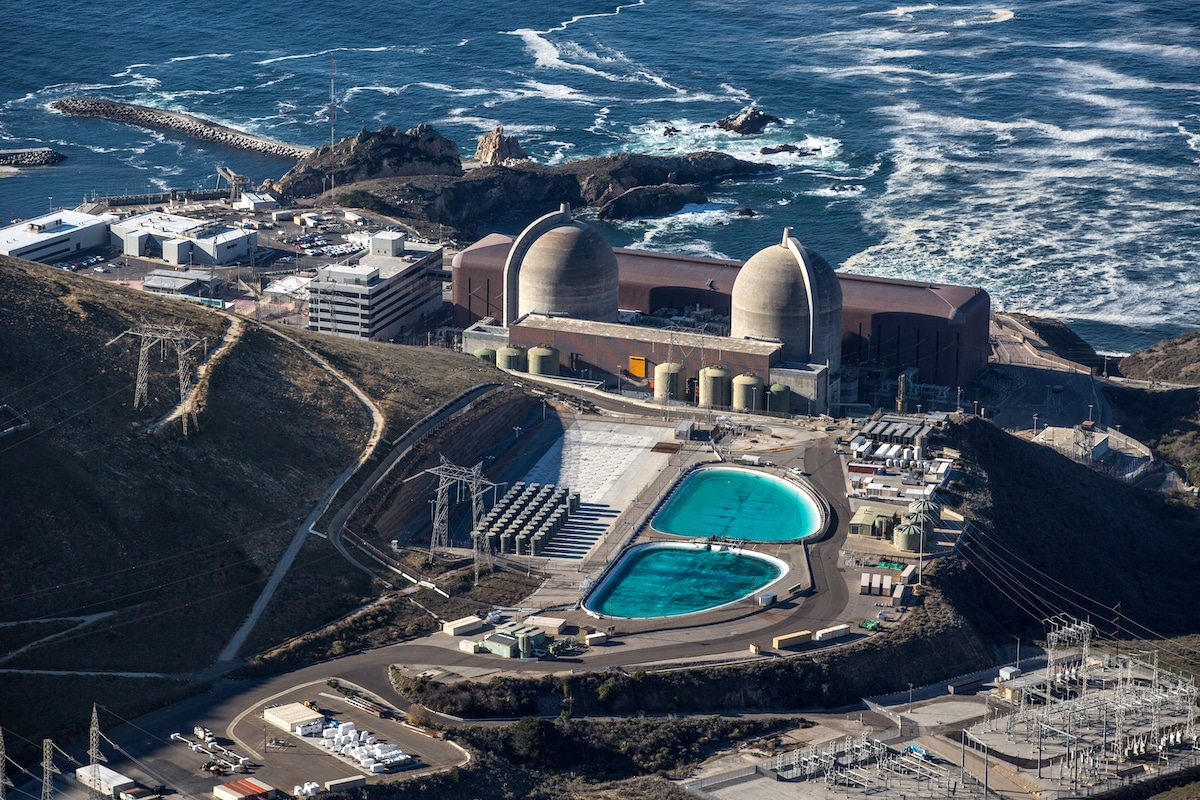Green Groups Blast ‘Dangerous and Dumb’ $1.4 Billion Bailout of California Nuclear Plant

 Why you can trust us
Why you can trust us
Founded in 2005 as an Ohio-based environmental newspaper, EcoWatch is a digital platform dedicated to publishing quality, science-based content on environmental issues, causes, and solutions.
By Brett Wilkins
Green groups on Thursday led condemnation of a vote by California lawmakers to keep the state’s last remaining nuclear power plant open for five more years, in part by lending its operator, the criminal corporation PG&E, $1.4 billion.
In a late-night, last-minute 67-3 vote Wednesday at the close of the legislative session, California Assembly members passed S.B. 846, which will keep PG&E’s 36-year-old Diablo Canyon plant near Avila Beach in San Luis Obispo County — slated to shut by 2025 — online until 2030. The state Senate subsequently passed the bill by a vote of 29-1. California Gov. Gavin Newsom, a Democrat, has said he will sign the measure into law.
For many climate campaigners, S.B. 846’s passage dampened a day on which California lawmakers passed a flurry of bills aimed at tackling the climate emergency, including measures legally mandating net-zero by 2045, establishing health and safety buffer zones around new oil and gas wells, and investing $54 billion in climate mitigation.
“The rush by lawmakers and Gov. Newsom to keep Diablo Canyon running is dangerous and dumb and will only set back California’s drive to make solar and wind the prevailing sources of electricity in the state,” Ken Cook, president of the Environmental Working Group, said in a statement. “EWG will explore every available opportunity — administratively, legally, and policy-wise — to prevent the extended operation of Diablo Canyon.”
State lawmakers, nuclear advocates, and even some environmental groups successfully argued that soaring summer temperatures and expected energy shortages warranted extending the plant’s life. Plant proponents claim it will be difficult to achieve California’s goal of transitioning to 100% renewable energy by 2045 without Diablo Canyon’s 2,250-megawatt capacity.
“This is critical in the context of making sure we have energy reliability going forward,” Newsom explained. “That energy does not produce greenhouse gases. That energy provides baseload and reliability and affordability that will complement and allow us to stack all of the green energy that we’re bringing online at record rates.”
As recently as 2020, Newsom approved of a plan to shutter Diablo Canyon. The Los Angeles Times reports:
PG&E agreed six years ago to close the plant in 2025 in part because of safety concerns in the event of a major earthquake along fault lines near the coastal San Luis Obispo County site and as environmental groups pressured the state to do more to meet its renewable energy goals.
But California’s inability to avoid rolling blackouts during 2020 heatwaves prompted Newsom to reconsider closing Diablo, the state’s single largest power source. The plant generated 6% of California’s electricity last year.
In a statement published the day before the Assembly vote, Erich Pica, president of the environmental advocacy group Friends of the Earth (FOE) U.S., said that Newsom’s “decision to try and extend the life of Diablo Canyon is reckless beyond belief.”
“Gambling with Diablo Canyon’s planned retirement is the riskiest pathway to deepen California’s commitment to fighting climate change while supplying reliable energy,” FOE said in a statement to Newsom. “Please withdraw your reckless proposal and support efforts to deepen investments in needed transmission, storage, and renewable energy.”
Others pointed to the 2011 earthquake and tsunami that caused the second-worst nuclear disaster in history at the Fukushima Daiichi Nuclear Power Plant in Japan as a reason to shutter the seaside California plant.
“The bill ignores the plant’s environmental impacts and vulnerability to earthquakes,” Juliet Christian-Smith, a regional director at the Union of Concerned Scientists, told NPR. “Safety cannot take a back seat in our quest to keep the lights on and reduce global warming emissions.”
Reposted with permission from Common Dreams.
Subscribe to get exclusive updates in our daily newsletter!
By signing up, you agree to the Terms of Use and Privacy Policy & to receive electronic communications from EcoWatch Media Group, which may include marketing promotions, advertisements and sponsored content.

 233k
233k  41k
41k  Subscribe
Subscribe 



